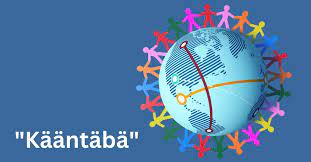Introduction to “Käöntöjä”
In a world where language bridges cultures and communities, “käöntöjä” emerges as a unique thread in the tapestry of translation. This term, originating from the Finnish language, holds layers of meaning and complexity. It reflecting the nuances of expression and interpretation across linguistic boundaries. In this article, we embark on a journey to unravel the threads of “käöntöjä,” exploring its significance, challenges, and impact on the world of translation.
Understanding “Käöntöjä”
Defining “Käöntöjä”
“Käöntöjä” is a Finnish term that encompasses a rich tapestry of creative and artistic expression. Rooted in the Finnish language, it signifies a holistic approach to translation that goes beyond mere linguistic conversion. It embodies the idea of transforming words and ideas into new forms of expression, weaving together cultural nuances, emotions, and experiences.
Significance of “Käöntöjä” in Modern Society
In an increasingly interconnected world, it plays a vital role in bridging gaps between languages and cultures. It serves as a conduit for sharing stories, ideas, and perspectives across linguistic boundaries, fostering understanding and empathy among diverse communities. As the world becomes more globalized, the need for skilled “käöntöjä” practitioners becomes increasingly pronounced.
The Evolution of “Käöntöjä”
Origins of “Käöntöjä”
The roots of “käöntöjä” can be traced back to ancient civilizations, where the art of translation served as a means of preserving knowledge and transmitting cultural heritage. Over time, it has evolved and adapted to changing societal norms, technological advancements, and cultural shifts, reflecting the dynamic nature of language and communication.
Modern Interpretations of “Käöntöjä”
In the modern era, “käöntöjä” encompasses a wide range of translation practices, from literary translation and interpretation to localization and transcreation. It embraces diversity and creativity, encouraging translators to infuse their work with personal flair and artistic expression. As the boundaries between languages blur, the art of “käöntöjä” continues to evolve and expand, embracing new mediums and methodologies.
Challenges and Complexities of “Käöntöjä”
Navigating Cultural Nuances
One of the key challenges of “käöntöjä” is navigating the intricate web of cultural nuances and references embedded within language. Translators must possess a deep understanding of both the source and target cultures. It ensuring that their translations accurately convey the intended meaning and tone.
Preserving Linguistic Integrity
Maintaining linguistic integrity is another critical aspect of “käöntöjä.” Translators must strike a delicate balance between fidelity to the original text and readability in the target language, adapting language and style to suit the preferences and expectations of the audience.
The Impact of “Käöntöjä”
Fostering Cross-Cultural Understanding
At its core, “käöntöjä” serves as a catalyst for cross-cultural understanding and dialogue. By facilitating communication between speakers of different languages, it promotes empathy, tolerance, and appreciation for diverse perspectives, enriching our collective experience as global citizens.
Empowering Voices
It also plays a crucial role in amplifying marginalized voices and perspectives. Through translation, previously inaccessible works and narratives can reach new audiences, empowering individuals to share their stories and advocate for social change.
Conclusion
In the intricate tapestry of translation, it emerges as a vibrant thread, weaving together languages, cultures, and ideas. Its significance lies not only in its ability to convey words across linguistic boundaries but also in its power to foster understanding, empathy, and connection. As we continue to unravel the threads of “käöntöjä,” let us embrace its complexities and celebrate its transformative impact on the world of translation.
FAQs (Frequently Asked Questions)
- What does “käöntöjä” mean?
- “Käöntöjä” is a Finnish term that encompasses a holistic approach to translation. It involving the transformation of words and ideas across linguistic and cultural boundaries.
- How is “käöntöjä” different from traditional translation?
- Unlike traditional translation, which focuses solely on linguistic conversion. It emphasizes creativity, cultural sensitivity, and personal expression, resulting in translations that are rich in nuance and meaning.
- What are some challenges of practicing “käöntöjä”?
- Navigating cultural nuances, preserving linguistic integrity, and balancing fidelity to the original text with readability in the target language are among the key challenges faced by practitioners of it.
- How can I learn more about “käöntöjä”?
- Exploring works of literature, attending translation workshops and seminars, and engaging with translation communities online are great ways to learn more about “käöntöjä” and its practice.
- What is the future of “käöntöjä” in an increasingly globalized world?
- As the world becomes more interconnected, the demand for skilled “käöntöjä” practitioners is expected to grow. It underscoring the importance of fostering cross-cultural understanding and communication in our increasingly diverse society.
